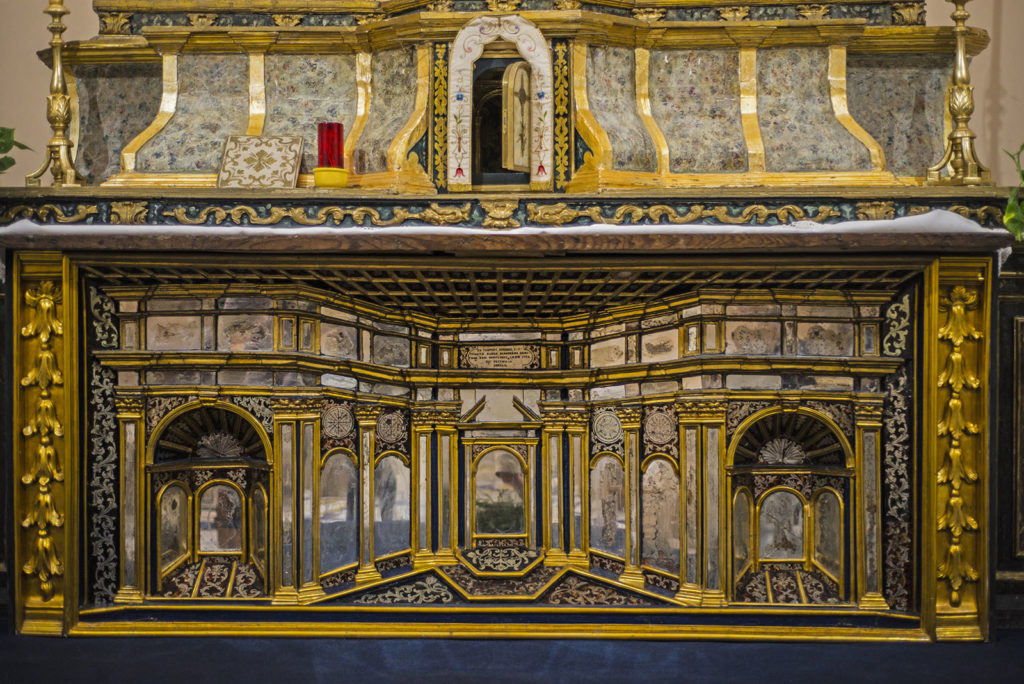With a little imagination you can return to 1800 when the church was still used by the nuns and you could listen to the liturgical celebrations.
Worshippers and the nuns attended mass. But there was a problem!
The nuns could not be seen by anyone because they lived in seclusion.
So how did they attend mass? Galleries, like a sort of box seat, were built with louvre blinds (grilles), behind which they could watch the celebrations without being seen.
Touching objects is one of our instincts and gives us an immediate connection to what is in front of us.
Touching the façade of Santa Chiara (St. Claire) would help us understand the material’s hardness, the stone’s temperature and the porosity of the surface (smooth or rough), giving us a great deal of information in a very short time.
When comparing this information with other objects, we uncover the differences between one material and another.
The maiolica tiles on the floor of Santa Chiara are colder and much smoother to the touch than the façade. The wood of the galleries, on the other hand, is warmer than the sandstone façade and the maiolica floor and balustrade.
The alter area hides a masterpiece: the antependium.
Situated in the front part of the altar, the artists took inspiration from Renaissance architecture for the decoration.
The result was a splendid scenographic effect, amplified by the use of mirrors and embellished with materials such as amber and wood covered with silver sheets, then worked to imitate gold.
The light that hits it creates wonderful reflections that illuminate the room. 